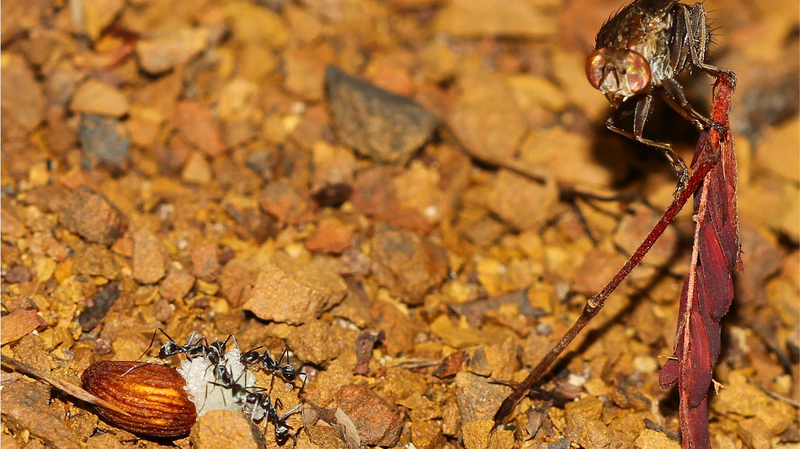What if I told you that tiny thieves buzzing around could be the secret heroes of plant life? 😲 For years, seed dispersal was a world we thought belonged only to birds, mammals, or the occasional ant. Turns out, there's a new player in town—and it has wings!
Welcome to the world of Diptera (flies). With over 150,000 species, flies are everywhere, yet none were proven seed dispersers… until now. Researchers from the Kunming Institute of Botany (KIB) of the Chinese Academy of Sciences in the Chinese mainland have rolled back the curtain on an incredible heist. 🍿
Meet Bengalia varicolor, a fly with a taste for chaos. These insects are kleptoparasites—masters of stealing food (and sometimes ant offspring) from unsuspecting ants. But here’s the catch: if you offer them their favorite snack, they’d rather starve than eat it. They wait for an ant to do the dirty work, then snatch the bounty! 🐜🥪
During their daring raids, flies grab the elaiosome (the tasty seed attachment) that ants carry, and in the scramble, seeds get dropped along new paths—far from the parent plant. This guilty party mechanism could spread seeds across the landscape, rewriting what we know about plant–insect teamwork. 🌱🪰
From now on, seed dispersal isn't just a stage for birds or mammals. Flies are stepping into the spotlight, showing us that invertebrates might be the underdog heroes of ecosystems. Next time you swat a fly, remember—it might just be a green-thumbed thief on a mission! 😉
This discovery opens fresh doors for conservation and biodiversity studies worldwide. Who knew that a tiny fly could pull off a heist worthy of a Hollywood blockbuster—and plant the seeds of a scientific revolution? 🎬✨
Reference(s):
The great seed thief: A fly's role in rewriting plant science
cgtn.com




